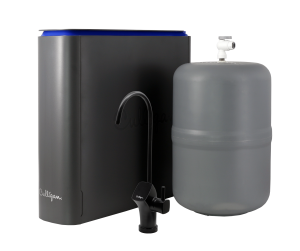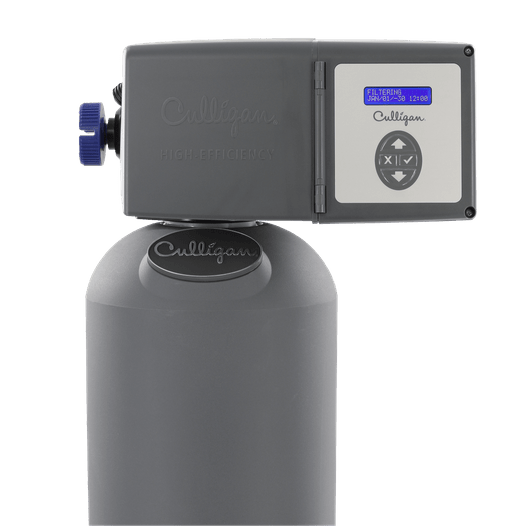Is Orange County’s Tap Water Safe to Drink? Investigating the Quality and Lead Contamination
The presence of lead in the water supply of Orange County has become a significant concern in recent years. This issue poses serious health risks to the residents, particularly children and pregnant women. Despite efforts to address the problem, the persistence of lead contamination in the water system highlights several key issues that need urgent attention. This essay will discuss the sources of lead contamination, the health implications, the challenges faced in remediation efforts, and the need for comprehensive solutions.
Lead contamination in Orange County’s water can be attributed to various sources. Aging infrastructure, such as lead pipes and fixtures, is a primary contributor. As these pipes corrode over time, lead particles leach into the water supply. Additionally, industrial activities, including manufacturing and mining, can introduce lead into the environment, which eventually finds its way into the water system. Furthermore, the use of lead-based solder in plumbing systems prior to its ban in the 1980s continues to be a source of contamination.
Exposure to lead-contaminated water can have severe health consequences. Lead is a neurotoxin that can cause developmental delays, learning disabilities, and behavioral problems in children. Pregnant women who consume lead-contaminated water are at risk of delivering premature or low birth weight babies. Long-term exposure to lead can also lead to kidney damage, cardiovascular issues, and reproductive problems in adults. The potential health risks associated with lead in the water demand immediate action to protect the well-being of Orange County residents.
Addressing the issue of lead contamination in Orange County’s water supply is a complex task. Replacing the aging infrastructure, including lead pipes, is a costly and time-consuming process. Moreover, identifying and eliminating other sources of lead, such as industrial activities, requires comprehensive monitoring and regulation. Public awareness and education campaigns are also necessary to inform residents about the risks and encourage them to take necessary precautions. Coordinating these efforts among various stakeholders, including government agencies, water utilities, and community organizations, presents a significant challenge.
How can you begin your journey to safer, cleaner water? It’s simple, schedule a free water test with Culligan of Orange County!
Orange County’s Battle Against Lead Contamination
Efforts are being made to address lead contamination in Orange County. Regular testing of drinking water sources is conducted, and regulations are enforced to ensure safe removal of lead-based paint during renovations. Educational resources are also provided to raise awareness about the risks of lead exposure. Collaboration with healthcare providers ensures early detection and intervention for individuals who have been exposed to lead. These measures aim to protect the community and mitigate the health risks associated with lead contamination.
1. Is there a concern about lead contamination in Orange County?
Yes, there is a concern about lead contamination in Orange County. Lead can be found in old paint, soil, and even drinking water, posing health risks if ingested or inhaled.
2. How does lead exposure occur in Orange County?
Lead exposure in Orange County can occur through various sources. Older homes with lead-based paint, industrial activities, and contaminated soil can contribute to lead exposure. Additionally, aging infrastructure and plumbing systems can lead to lead leaching into drinking water.
3. What are the health risks associated with lead exposure?
Lead exposure can have severe health effects, especially in children. It can lead to developmental delays, learning difficulties, behavioral problems, and even damage to the brain, kidneys, and other organs. Pregnant women exposed to lead may experience complications and harm the developing fetus.
4. How can I protect myself and my family from lead exposure?
To protect yourself and your family from lead exposure, it is important to take precautions. Regularly test your home for lead-based paint, especially if it was built before 1978. Use water filters for drinking and cooking if you suspect lead contamination in your tap water. Additionally, practice good hygiene by washing hands frequently, especially before eating.
5. What is being done to address lead contamination in Orange County?
Orange County authorities are actively working to address lead contamination. They conduct regular testing of drinking water sources, enforce regulations on lead-based paint removal during renovations, and provide educational resources to raise awareness about lead exposure risks. Additionally, they collaborate with healthcare providers to ensure early detection and intervention for lead-exposed individuals.
Lead contamination is a significant concern in Orange County. The presence of lead in old paint, soil, and drinking water poses health risks, particularly for children and pregnant women. It is crucial for individuals to take proactive measures to protect themselves and their families from lead exposure, such as testing for lead-based paint, using filtered or bottled water, and practicing good hygiene. Fortunately, Orange County authorities are actively addressing this issue through regular testing, enforcement of regulations, and educational initiatives. By working together, we can mitigate the risks associated with lead contamination and ensure the health and well-being of our community.
Safeguarding Public Health in Orange County
One of the major health concerns associated with lead exposure is its impact on the nervous system. Lead can cause developmental delays and learning disabilities in children, leading to long-term cognitive impairments. Additionally, it can affect the cardiovascular system, leading to increased blood pressure and an increased risk of heart disease.
Lead exposure is particularly dangerous for pregnant women as it can cross the placenta and harm the developing fetus. It can result in premature birth, low birth weight, and developmental issues in newborns.
For children, the effects of consuming lead-contaminated water are especially high. Once consumed, lead remains in our bodies or ‘bioaccumulates’, as we can’t flush the contaminant from our system. Once there, lead can cause serious behavioral and cognitive problems for children, and over time it can lead to:
- Low IQ
- Hyperactivity
- Slowed, delayed, and stunted growth
- Problems hearing
- Anemia
- Seizures, coma, and possibly even death in severe situations
Furthermore, lead can accumulate in the body over time, causing chronic health problems. It can damage the kidneys, impair the reproductive system, and even lead to cancer.
To address these health concerns, it is crucial for the residents of Orange County to be aware of the potential lead contamination in their water supply. Regular testing of water sources, especially in older homes, is essential to identify and mitigate lead exposure risks.
Lead also crosses the placenta, so it’s especially important for pregnant women to avoid drinking water contaminated with lead. In addition to harming the mother, it can cause stunted fetal growth and premature birth.
For the average adult, lead exposure from water can cause heart and cardiovascular issues, reduce kidney function, and contribute to reproductive problems.
The degree and severity of these issues depends on how much lead you’ve been exposed to, and how much is stored in your body, though governing health authorities like the Centers for Disease Control (CDC) caution that no amount of lead is safe.

Lead In Your Orange County Drinking Water
In the U.S., 14-20% of lead exposure is attributed to drinking water. Municipalities have taken action over the past 30 years to ban lead solder, reduce corrosivity and remove lead from brass faucets and water meters, and these measures have significantly helped exposure issues.
Studies are show that lead at even its most minute levels can cause neurological, learning and IQ defects in children, and that these lower levels but widespread exposures can have large health effects.
Lead lends itself very easily to building pipes – like those used for transporting water. It’s malleable, relatively cheap to use and, as a result, its use in plumbing dates back to early Roman cities. Lead piping was also the standard in the United States until the 1920s and 30s, when concerns about lead poisoning became better understood.
How Lead Enters Drinking Water Systems
The most common way lead can enter a drinking water system is through corrosive aging pipes and plumbing infrastructure. Many homes, and sometimes entire communities, have plumbing infrastructure that has not been updated for decades, and sometimes more than a century.
These homes are at high risk for lead contamination, even if the water coming through it has been properly treated.
When pipes, fitting or solder have become corroded, water can become contaminated.
Proactive Prevention: The Best Deterrent
The best way to avoid a lead problem is to never have one. Despite the ongoing issues in many cities throughout America, many homeowners are simply not keen in getting a simple water test.
A test can determine whether your household has tap water, and whether this exposure can be avoided in the interim by flushing it for a specified amount of time. Knowing this can be the difference between your family becoming exposed to lead in tap water.
Synopsis of Flint Crisis

The Flint Crisis was a situation where the water was improperly treated – specifically, a severe act of negligence on the part of public officials failing to add corrosion inhibitors to the water. Given the heightened sense of awareness and knowledge of the issue, another such problem is likely not in the realm of possibility.
However, that doesn’t mean all water in your home is safe. Even treated water can leach lead into its supply if your pipes or fixtures are made of lead.
The final tally on the Flint Water Crisis, which included e.coli bacteria, THMs, lead, and a Legionnaire’s disease outbreak, resulted in 6,000 to 12,000 children exposed to lead and a slew of lawsuits, investigations, resignations and criminal indictments.
Solutions
Suggested Products

The Aquasential® Smart Reverse Osmosis Water Filter (RO)
- 7 stages of filtration and 12 filter options
- Certified for reduction of 58 contaminants
- 2-in-1 sediment and carbon filter screens out sediment and particles
- Can alert you and your dealer when service or filter replacements are needed

Aquasential™ Smart High Efficiency Whole House Water Filters
Reduce sediments in your water and contaminants that cause your water to appear, taste, and smell unpleasant. Your system can also lessen the taste and odor of chlorine, and prevent pipe damage and staining from low pH water. Additional customizations include:
- Culligan® Filtr-Cleer® Water Filters – Reduces Sediment Problems
- Culligan® Cullar® Water Filters – Reduces Taste and Odor Problems
- Culligan® Cullneu Water Filters – Reduces Acid Problems

Facebook